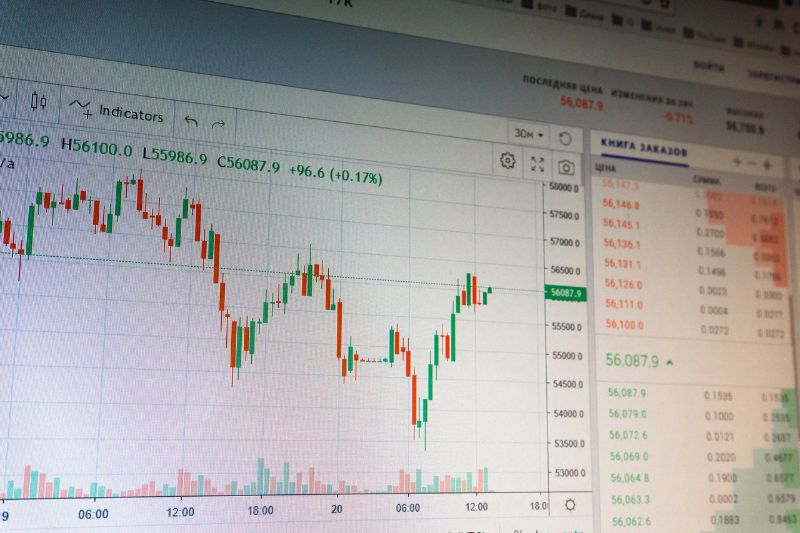Dividends are income gained through stocks, mutual funds, or exchange-traded funds, and they are reported on Schedule B of your tax return, Form 1040. The difference in value between when an asset is purchased and when it is sold is known as capital gains. Dividends and short-term capital gains, as well as qualifying dividends and long-term capital gains, are treated similarly under the US tax code.
Is capital gains the same as dividends?
Capital gains and dividend income are both sources of profit for owners and can result in tax liability. Here are the distinctions and what they represent in terms of investments and taxes paid.
The original investment is referred to as capital. As a result, a capital gain occurs when an investment is sold at a higher price than when it was purchased. Capital gains are not realized until investors sell their investments and take profits.
Dividend income is money distributed to stockholders from a corporation’s profits. It is treated as income rather than a capital gain for that tax year. The federal government of the United States, on the other hand, taxes eligible dividends as capital gains rather than income.
Is it better to reinvest dividends and capital gains?
Reinvesting dividends rather than collecting cash will help you more in the long run if a firm continues to develop and your portfolio is well-balanced. When a company is faltering or your portfolio becomes unbalanced, though, removing the money and investing it elsewhere may be a better option.
What is qualified dividends and capital gain tax?
The variations between qualified and unqualified (ordinary) dividends may look slight, but they have a major impact on overall results. In general, most regular dividends paid by firms in the United States can be categorized as eligible dividends.
The rate at which these dividends are taxed is the most significant distinction between qualified and unqualified dividends in terms of their tax impact. Unqualified dividends are taxed at the individual’s regular income tax rate, rather than the preferential rate indicated above for qualified dividends. This means that people in any tax band will pay different tax rates depending on whether they get qualifying or ordinary dividends.
What are examples of capital gains?
A capital asset is almost everything you own and employ for personal or investment purposes. A home, personal-use things such as domestic furnishings, and stocks or bonds kept as investments are all examples. When you sell a capital asset, the difference between the asset’s adjusted basis and the sale price is referred to as a capital gain or loss. The foundation of an item is usually the cost to the owner, but if you acquired the asset as a gift or inheritance, see Topic No. 703 for further information. Publication 551, Basis of Assets, contains information on computing adjusted basis. If you sell an asset for more than its adjusted basis, you earn a capital gain. If you sell an asset for less than its adjusted basis, you incur a capital loss. Personal-use property losses, such as those from the sale of your home or automobile, are not tax deductible.
How do I avoid paying tax on dividends?
You must either sell well-performing positions or buy under-performing ones to get the portfolio back to its original allocation percentage. This is when the possibility of capital gains comes into play. You will owe capital gains taxes on the money you earned if you sell the positions that have improved in value.
Dividend diversion is one strategy to avoid paying capital gains taxes. You might direct your dividends to pay into the money market component of your investment account instead of taking them out as income. The money in your money market account could then be used to buy underperforming stocks. This allows you to rebalance your portfolio without having to sell an appreciated asset, resulting in financial gains.
What is the capital gain tax for 2020?
Depending on how long you’ve kept the asset, capital gains taxes are classified into two categories: short-term and long-term.
- A tax on profits from the sale of an asset held for less than a year is known as short-term capital gains tax. Short-term capital gains taxes are calculated at the same rate as regular income, such as wages from a job.
- A tax on assets kept for more than a year is known as long-term capital gains tax. Long-term capital gains tax rates range from 0% to 15% to 20%, depending on your income level. Typically, these rates are significantly lower than the regular income tax rate.
Real estate and other sorts of asset sales have their own type of capital gain and are subject to their own set of laws (discussed below).
Does dividends count as income?
Dividends received from another domestic corporation by a domestic or resident foreign corporation are not taxed. These dividends are not included in the recipient’s taxable income.
A general final WHT of 25% is applied to dividends received by a non-resident foreign corporation from a domestic corporation. If the jurisdiction in which the corporation is domiciled either does not levy income tax on such dividends or permits a 15 percent tax deemed paid credit, the rate is reduced to 15%.
Do Tesla pay dividends?
Tesla’s common stock has never paid a dividend. We want to keep all future earnings to fund future expansion, so no cash dividends are expected in the near future.
How long do you have to hold a stock to get the dividend?
You must keep the stock for a certain number of days in order to earn the preferential 15 percent tax rate on dividends. Within the 121-day period around the ex-dividend date, that minimal term is 61 days. 60 days before the ex-dividend date, the 121-day period begins.
How do I know if my dividends are qualified?
To be eligible, you must own the stock for at least 60 days within the 121-day period beginning 60 days before the ex-dividend date. If that makes your head spin, consider this: If you’ve held the stock for a few months, you’re almost certainly getting the qualified rate.
Are Apple dividends qualified or ordinary?
However, in order to benefit from the lower tax rate, investors must meet specific criteria. A minimum holding duration must be adhered to by investors. During the 120-day period beginning 60 days before the ex-dividend date, a share of common stock must be held for more than 60 days. The holding period for preferred shares is 90 days during the 180-day period beginning 90 days before the ex-dividend date. If an investor receives a dividend from Apple (AAPL) or Microsoft (MSFT) and meets the holding time requirements, the dividend is eligible. The dividend is unqualified if the holding period is not met (and thus taxed at the normal income tax rate).
What’s Qualified and What Isn’t
Dividends paid by real estate investment trusts (REITs) and master limited partnerships (MLPs), dividends paid on employee stock options, dividends paid by tax-exempt companies, and dividends paid on savings or money market accounts are all examples of unqualified dividends that do not qualify for the tax preference. Unqualified dividends are also received in Individual Retirement Accounts (IRAs), albeit this distinction is mostly immaterial because most capital gains and dividends in IRAs are tax-free to begin with. Finally, non-qualified dividends include exceptional (one-time) dividends.
Dividends paid by a foreign corporation are qualified if the company is qualified. A foreign corporation is qualified, according to the IRS, “if it is formed in a US possession or qualifies for benefits of a comprehensive income tax treaty with the US that the Treasury Department believes is suitable for this purpose and includes an exchange of information program.” This means the foreign company must be connected to the US in some way and/or be located in a country that has a tax treaty with the IRS and Treasury Department.





